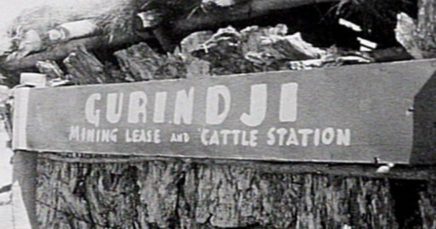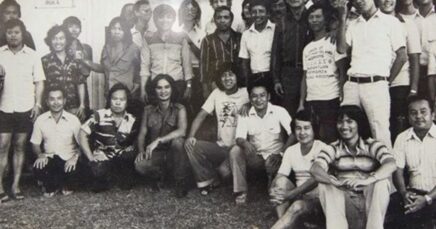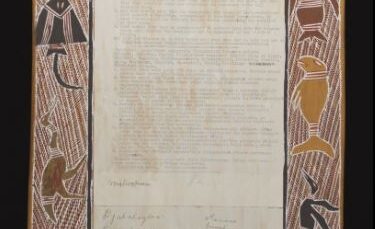Aboriginal and Torres Strait Islander Readers are advised that this page does include images of deceased persons.

William Cooper was a legendary Aboriginal leader and activist whose legacy still resonates today. Mr Cooper was also a proud trade unionist.
Mr Cooper led a famed petition campaign calling for an Aboriginal and Torres Strait Islander representative to parliament. His was a courageous and determined life of struggle for justice and against racism.
Today, the union movement proudly remembers Mr Cooper and his extraordinary activism. While we remember him as a unionist, we also acknowledge that during his lifetime Mr Cooper and other Aboriginal and Torres Strait Islander peoples experienced exclusion and discrimination from our movement as well as Australian society more broadly.
Respect and recognition begins with acknowledgement of the times our movement got it wrong. Unions are dedicated to learning from the past as we strive to do better today.
Mr Cooper was born in the 1860s on Yorta Yorta country. He spent much of his early life living on reserves and missions in New South Wales and Victoria, including the Cummeragunja mission.
As a young man Mr. Cooper worked as a shearer, and was a member of the Australian Workers’ Union.
He would later write: ‘I was a member of the Shearers’ Union from the time of its organisation until I got too old for work.’

In the 1890s, Mr Cooper was a participant in the giant strikes that took place in the shearing industry. Pastoral employers at that time sought to undermine the union and prevent workers from coming together to bargain collectively.
The union took action in a series of strikes from 1890 to 1894. Mr. Cooper recalled that he had been ‘active in the Union in the year of the call-out, 1890, on the Darling River, and in the big shearers strike in 1892.’ He recalled that in the ‘strike of 1894 I was on picket duty.’
One of Mr Cooper’s biographers, Diane Barwick, wrote that his “membership of the Australian Workers’ Union made him a spokesman for the dispersed communities of central Victoria and western New South Wales who were ineligible for any aid during the 1920s drought and the 1930s Depression.”
But it was his activism in the 1930s after he had retired from shearing that Mr Cooper became best known.
Mr. Cooper moved to the working class suburb of Footscray in Melbourne, where he became a prominent campaigner for respect and recognition and against the pervasive racism that Aboriginal and Torres Strait Islanders experienced, then and now, as a result of colonisation and their dispossession.
This was a time when racist government authorities named “Protection Boards” had direct control over the lives of many Aboriginal and Torres Strait Islander peoples. Mr Cooper campaigned against these inequities, and for Aboriginal and Torres Strait Islander representation in the Australian political system.
Central to this was Mr Cooper’s petitioning campaign of this time. In this petition, he called upon King George V to grant “our people representation in the Federal Parliament…”
That was, a Member of Parliament who would represent Aboriginal and Torres Strait Islander people.

After several years’ worth of effort gathering more than 1800 signatures from Aboriginal and Torres Strait Islander people the petition was submitted to Prime Minister Joe Lyons to be presented to the King.
After a month Cooper received a response, not from the Prime Minister, but his secretary declining to pass it on to the King. A few months later the petition’s objectives were formally rejected by the government.
In 1936, Mr. Cooper was central to the foundation of a new Aboriginal advocacy and activist organisation: the Australian Aborigines’ League (AAL). Mr Cooper was Secretary of the organisation.
Other notable founders include the legendary Margaret Tucker and Pastor Doug Nicholls.
The League undertook a wide array of activities to advance Aboriginal rights.
One of its most famous actions, led by Mr. Cooper, came in 1938.
Government authorities had planned a massive celebration for the 150th anniversary of the landing of the First Fleet on 26 January 1938.
Mr. Cooper raised the prospect of holding a “Day of Mourning” on that date to highlight the dispossession of Aboriginal and Torres Strait Islander peoples and the ongoing effects of colonisation.
The AAL collaborated on this protest with a Sydney-based organisation, the Aborigines Progressive Association (APA), led by Bill Ferguson – also an Aboriginal former shearer and organiser for the Australian Workers’ Union.
The Day of Mourning included a giant protest march where Aboriginal and Torres Islander protestors marched alongside non-Indigenous supporters. The day culminated at the Day of Mourning Congress, which was a mass meeting open to Aboriginal and Torres Strait Islander people only.
In a potent indication of the racism of the time, as Dr Gary Foley relates, the organisers had originally sought to use the Sydney Town Hall for the event but this request had been denied. They settled for the nearby Elizabeth Hall, but when the estimated 1,000 participants entered the building, they were forced to do so through the back entrance as they were not allowed to walk through the front door.

Dr. Foley has noted that this was ‘one of the first mass civil rights gatherings’ in Australia.
Later that year Mr Cooper and the AAL undertook a protest action of remarkable and poignant solidarity against racism and oppression.
In November 1938, Jewish homes and businesses were attacked in a coordinated campaign of terror in Nazi Germany. This was known as Kristallnacht. Dozens of Jewish people were murdered and tens of thousands imprisoned.
Following this attack Mr Cooper led a delegation from the AAL to the German consulate, protesting Nazi violence and terror.
In February of 1939 residents if the Cummeragunja reserve, where Mr Cooper had once resided, organised a walk off in opposition to the racist treatment they had experienced at the hands of the white station manager.
Leaders of the walk off were arrested, and residents subject to harassment and victimisation.
Mr Cooper played an active role in raising support for the Aboriginal residents who walked off the station and set up camp and campaigned to initiate a Royal Commission into the racist so-called Aborigines Protection Board.
Mr Cooper appealed directly to his fellow unionists to support his cause.
Some individual unions and unionists did respond.
Unionists such as JF Chapple, Secretary of the Australian Railways Union, played a prominent role alongside Aboriginal activists and organisers in the creation of support committees in Melbourne to support Cummeragunja residents.
The legendary Aboriginal activist Margaret Tucker spearheaded fundraising efforts among trade union members to collect for the strike, finding the Waterside Workers Federation was particularly staunch in its contribution.
The ACTU wrote to the NSW Government criticising the treatment of Indigenous people and calling for an inquiry into Cummeragunja’s management practices.
While his call was answered by individual unions and individual unionists, it was not answered by the whole of the movement. It was not answered by the vast majority of our movement. This is a reality we must remember, and learn from, today.

Mr Cooper sustained his activism throughout the rest of his life. He passed away on the 29th of March 1941.
William Cooper is a legendary figure in Australian history. He left a remarkable and powerful legacy for us all to follow today.
The union movement is determined to do so.
In 2023 the union movement is united in our support for practical recognition for Aboriginal and Torres Strait Islander people through a constitutionally enshrined Voice to Parliament.
Aboriginal and Torres Strait Islander history is rich and unique and begins with more than 65,000 years of continuous cultural connection to this land.
Yet Australia’s 122-year-old constitution still doesn’t recognise the Australians that were here first, Aboriginal and Torres Strait Islander people.

It’s time we did, together.
It’s time to answer Mr. Cooper’s call.
Find out how to commit to support an Aboriginal and Torres Strait Islander Voice to Parliament here.
By Dr. Liam Byrne
ACTU Historian.
Further reading:
Diane Barwick, ‘Cooper, William (1861–1941)’, Australian Dictionary of Biography, National Centre of Biography, Australian National University, https://adb.anu.edu.au/biography/cooper-william-5773/text9787, published first in hardcopy 1981, accessed online 21 March 2023.
“Uncle William Cooper Petitions the King of England”, Deadly Story, https://deadlystory.com/page/culture/history/Uncle_William_Cooper_petitions_the_King_of_England_for_Aboriginal_rights
“William Cooper: A leader of leaders”, First Peoples – State Relations, vic.gov.au, https://www.firstpeoplesrelations.vic.gov.au/william-cooper
Bain Attwood, William Cooper: An Aboriginal Life Story (Carlton: The Miegunyah Press, 2021).



